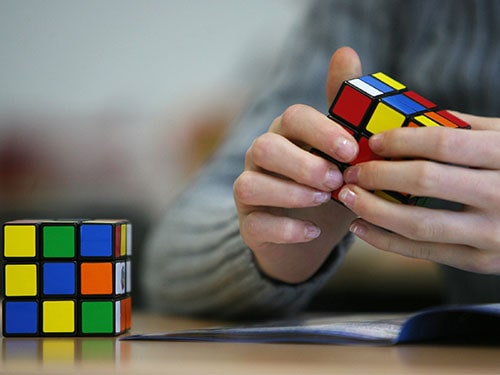By Mary Bellis
There is only one correct answer—and 43 quintillion wrong ones—for the Rubik’s Cube. God’s algorithm is the answer that solves the puzzle in the least number of moves. One-eighth of the world’s population has laid hands on ‘The Cube’, the most popular puzzle in history and the colorful brainchild of Erno Rubik.
Erno Rubik’s Early Life
Erno Rubik was born in Budapest, Hungary during World War II. His mother was a poet, his father an aircraft engineer who started a company to build gliders. Rubik studied sculpture in college, but after graduating, he went back to learn architecture at a small college called the Academy of Applied Arts and Design. He remained there after his studies to teach interior design.
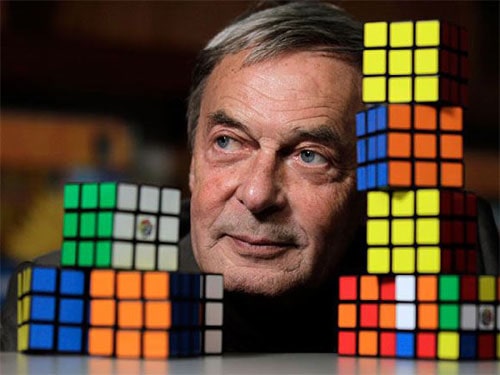
The Cube
Rubik’s initial attraction to inventing the Cube was not in producing the best-selling toy puzzle in history. The structural design problem interested Rubik; he asked, “How could the blocks move independently without falling apart?” In Rubik’s Cube, twenty-six individual little cubes or “cubies” make up the big Cube. Each layer of nine cubies can twist and the layers can overlap. Any three squares in a row, except diagonally, can join a new layer. Rubik’s initial attempt to use elastic bands failed, his solution was to have the blocks hold themselves together by their shape. Rubik’s hand carved and assembled the little cubies together. He marked each side of the big Cube with adhesive paper of a different color and started twisting.
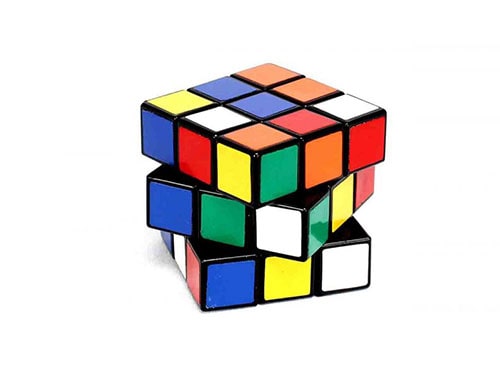
An Inventor Dreams
The Cube became a puzzle in the spring of 1974 when the twenty-nine-year-old Rubik discovered it was not so easy to realign the colors to match on all six sides. Of this experience, he said:
“It was wonderful, to see how, after only a few turns, the colors became mixed, apparently in random fashion. It was tremendously satisfying to watch this color parade. Like after a nice walk when you have seen many lovely sights you decide to go home, after a while I decided it was time to go home, let us put the cubes back in order. And it was at that moment that I came face to face with the Big Challenge: What is the way home? “
He was not sure he would ever be able to return his invention to its original position. He theorized that by randomly twisting the Cube he would never be able to fix it in a lifetime, which later turns out to be more than correct. He began working out a solution, starting with aligning the eight corner cubies. He discovered certain sequences of moves for rearranging just a few cubies at a time. Within a month, he had the puzzle solved and an amazing journey lay ahead.
First Patent
Rubik applied for his Hungarian patent in January 1975 and left his invention with a small toy making cooperative in Budapest. The patent approval finally came in early 1977 and the first Cubes appeared at the end of 1977.
Two other people applied for similar patents at about the same time as Rubik. Terutoshi Ishige applied a year after Rubik, for a Japanese patent on a very similar cube. An American, Larry Nichols, patented a cube before Rubik, held together with magnets. Nichols’ toy was rejected by all toy companies, including the Ideal Toy Corporation, which later bought the rights to Rubik’s Cube.
Sales of the Rubik’s Cube were sluggish until Hungarian businessman Tibor Laczi discovered the Cube. While having a coffee, he spied a waiter playing with the toy. Laczi an amateur mathematician was impressed. The next day he went to the state trading company, Konsumex, and asked permission to sell the Cube in the West.
Tibor Laczi had this to say on first meeting Erno Rubik
When Rubik first walked into the room I felt like giving him some money,” he says. ”He looked like a beggar. He was terribly dressed, and he had a cheap Hungarian cigarette hanging out of his mouth. But I knew I had a genius on my hands. I told him we could sell millions.
Nuremberg Toy Fair
Laczi proceeded to demonstrate the Cube at the Nuremberg toy fair, but not as an official exhibitor. Laczi walked around the fair playing with a Cube and managed to meet British toy expert Tom Kremer. Kremer thought Rubik’s Cube was the wonder of the world. He later arranged an order for a million Cubes with Ideal Toy.
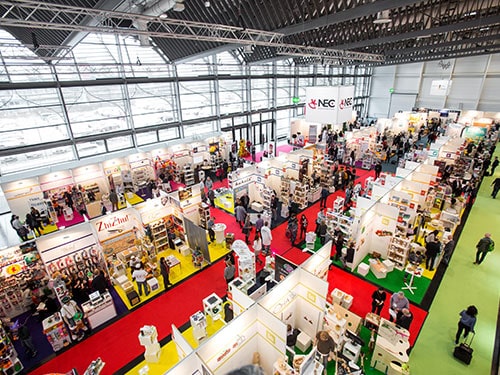
What’s in a Name?
Rubik’s Cube was first called the Magic Cube (Buvuos Kocka) in Hungary. The puzzle had not been patented internationally within a year of the original patent. Patent law then prevented the possibility of an international patent. Ideal Toy wanted at least a recognizable name to copyright; of course, that arrangement put Rubik in the spotlight because the Magic Cube was renamed after its inventor.
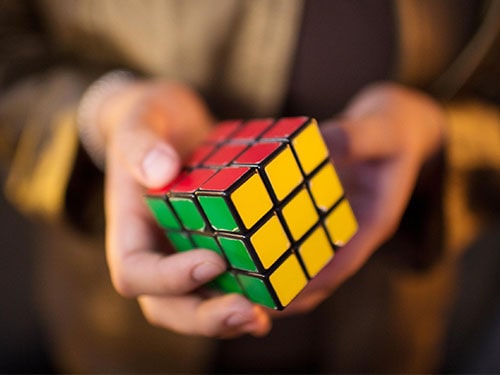
بازدیدها: 0


